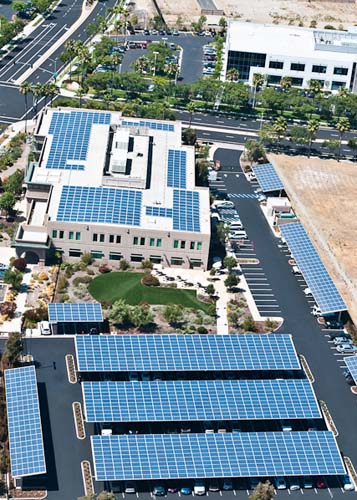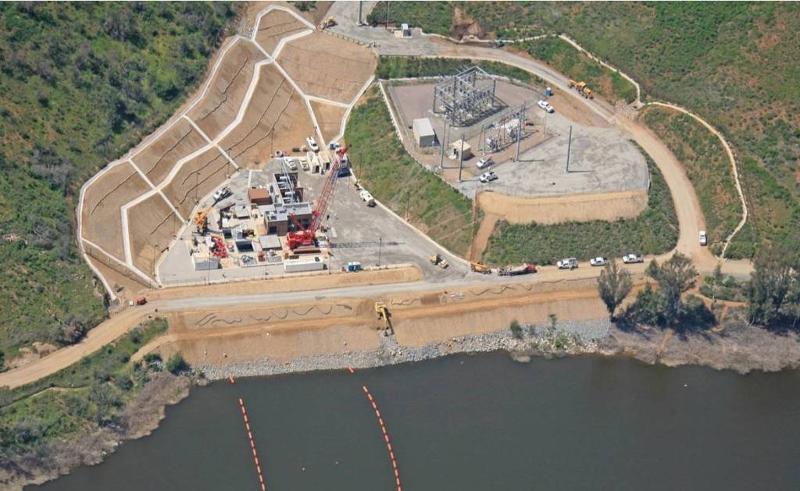Water Talks: New Challenges, New Supplies
to see the presentations from our September 13 forum, where we discussed Local Supply Development projects such as recycled water, indirect potable reuse, seawater desalination and storage options.
|
The Conservation Garden will hold it annual Fall Garden and Home Festival on Saturday, November 5 from 9 a.m. to 4 p.m.
It's a great opportunity to see water efficient displays, talk to your local retail agency, take classes, or speak with a landscape designer about your WaterSmart Garden.
|
Rebates Can Help Save Water and Money ! Commercial, Industrial, & Institutional Rebate ProgramThe Commercial, Industrial, & Institutional Save-A-Buck Rebate Program provides a rebate for the replacement of older, inefficient devices used by businesses. The installation of many of the products save not only water, but also wastewater and energy. Please visit MWD's Be Water Wise website for full program details. Residential Rebate Program The SoCal Water$mart Residential 2011-2012 program is now available! This program will run until April 30, 2012. Please visit MWD's Be Water Wise website for rebates on high-efficiency washers, weather based irrigation controllers, and rotating nozzles.
|
|
|
|
UCAN and IID Join Legal
Battle Against MWD
The Utility Consumers Action Network and the Imperial Irrigation District are now officially part of the Water Authority's litigation against the Metropolitan Water District of Southern California over its 2011 and 2012 rate structure. On September 22, a judge ruled over MWD's objections that UCAN and IID have standing as interested parties to participate fully in the lawsuit. UCAN successfully argued that it had an interest in protecting San Diego ratepayers against being overcharged for their water. Similarly, IID has an interest in ensuring MWD's rates are fair because MWD has the only facilities available to transport water throughout Southern California. Additionally, on September 23, attorneys for the Water Authority filed a motion for leave to file an amended complaint, seeking to add several new causes of action to its lawsuit against MWD. The new allegations include assertions that MWD member agencies held secret meetings to agree on rates and other policies that overcharged San Diego County ratepayers by millions of dollars, while keeping rates low for their own agencies. Further, the amended complaint alleges MWD is unconstitutionally denying San Diego County ratepayers access to funds for local supply development projects and conservation programs in retaliation for the Water Authority's lawsuit, and that MWD is under calculating the Water Authority's preferential right to water, which could affect the region's future water supply reliability. The motion for leave to file the amended complaint will be heard in San Francisco Superior Court on October 27. In June 2010, the Water Authority filed a lawsuit challenging MWD's 2011 and 2012 rates. The Water Authority believes that MWD, the region's largest supplier of imported water, improperly overcharges for the transportation of water, and uses that money to subsidize the cost of MWD water to the benefit of MWD's other member agencies. The Water Authority is the only MWD member agency that uses MWD's pipeline system to transport water. The Water Authority estimates that MWD overcharges will cost San Diego County ratepayers up to $230 million annually by 2021. |
Power Outage Reinforces Need for
Emergency Preparedness
| |  Water Authority staff participate in the Golden Guardian Exercise at the Emergency Operations Center. Water Authority staff participate in the Golden Guardian Exercise at the Emergency Operations Center. |
The recent power outage was a good test of the county's emergency preparedness. The blackout also raised questions about the reliability and safety of the region's water supply in an emergency. Despite the power outage, the Water Authority's regional water transportation, treatment, and storage system was fully operational and met all member agency demands. Water continued to flow into the county and to the region's 24 member retail agencies. Residents were encouraged to follow normal water conservation practices and check with their local water provider for any special instructions in their area. During the blackout, the Water Authority activated its Emergency Operations Center. Updates also were posted on its Facebook page. When power was restored, the Water Authority continued to post updated information to Facebook and its website.
Water Authority's Emergency Plans
The Water Authority maintains a comprehensive emergency preparedness plan compliant with the National Incident Management System. The standard methods assist responding agencies in communicating with a common structure and message.
The Water Authority regularly coordinates with its member agencies, the San Diego County Office of Emergency Services , as well as law and fire personnel to share information and ensure readiness to respond. The Water Authority's most visible preparedness tool is the Emergency Storage Project. Once fully constructed, the ESP will allow the Water Authority to deliver locally stored water to San Diego County residents in the event of a water supply outage. Less visible, but equally important, are routine physical and electronic monitoring of our transmission system facilities, which can keep small events from turning into larger ones.
How Can You Help?
In the event of a water outage or other emergency, citizens can help by being prepared themselves. All citizens should be capable of taking care of their needs for at least three days following a major emergency. Complete your own Family Disaster Plan and Personal Survival Guide to determine what to have on hand. Review and practice your plan regularly. Register your cell phone with Alert San Diego.
During a regional large scale emergency, monitor the radio such as KOGO and news broadcasts to keep informed. Regular information updates are also provided at www.sdcountyemergency.com or by dialing 2-1-1.
To keep yourself informed about special instructions from you local water provider, please use the member agency search feature on the Water Authority's web page here. Stay on top of water issues and know where to go in case of an emergency. To receive updates in the future about important regional water supply and reliability issues, "like" us on Facebook, share our posts with your friends, and visit sdcwa.org! |
Water Authority Flips the
Switch on Solar Power
 | | Solar panels on carports and building at Kearny Mesa headquarters |
In August, the Water Authority officially powered up solar power at three facilities. Over 7,500 solar panels were installed on the building and carport structures at the Kearny Mesa Headquarters, Escondido Operations Center, and on several structures at the Twin Oaks Valley Water Treatment Plant in San Marcos. These solar electric systems are capable of producing approximately 2.6 million kilowatt-hours of electricity combined per year. Based on current rates, the systems are projected to save the region's ratepayers $1.7 million in energy costs over the next 20 years and will enable the agency to meet a significant portion of its power needs with renewable energy.
The solar panels were installed at no cost to the Water Authority under a 20-year power purchase agreement with Borrego Solar Systems, Inc. Under the agreement, the Water Authority will purchase the solar power from Borrego Solar's financial arm, Greenlake Capital, at a set rate with a set escalator, in exchange for Borrego Solar covering capital costs. Sun Edison will operate and maintain the system and the Water Authority retains the right to purchase the systems after seven years.
Click here to learn more about the solar systems, including details on the Blink electric vehicle charging stations.
|
Lake Hodges Pumped Storage
Project Begins Operations
| | |
 View of the pump station and electrical substation on the western edge of Lake Hodges View of the pump station and electrical substation on the western edge of Lake Hodges
|
The first of two 28,000-horsepower pump turbines at the Water Authority's Lake Hodges Pumped Storage Project officially began operations in September. The facility will allow for greater flexibility in the regional water delivery and storage system, while providing up to 20 megawatts of electricity for the region, which is enough power for 13,000 homes. Revenues from the power generation will help offset costs. The $196 million project is a key component of the Water Authority's $1.5 billion Emergency Storage Project, a system of reservoirs, pipelines, and pumping stations designed to ensure that up to a six-month supply of locally stored water is available for the region in the event a disaster or other event interrupts imported water deliveries. The connection, via an underground pipeline, makes 20,000 acre-feet of water in Lake Hodges available for use. In addition, the project generates hydroelectric power for the region by sending water from Olivenhain Reservoir through pump turbines as it flows approximately 770 feet downhill into Lake Hodges. Power is generated during daylight hours when electricity demand is highest, and water is pumped back into Olivenhain Reservoir during off-peak hours when energy costs are lower. Click here to view the news release. Click here for more information on the Lake Hodges Project. |
|
|
|
|
|
|